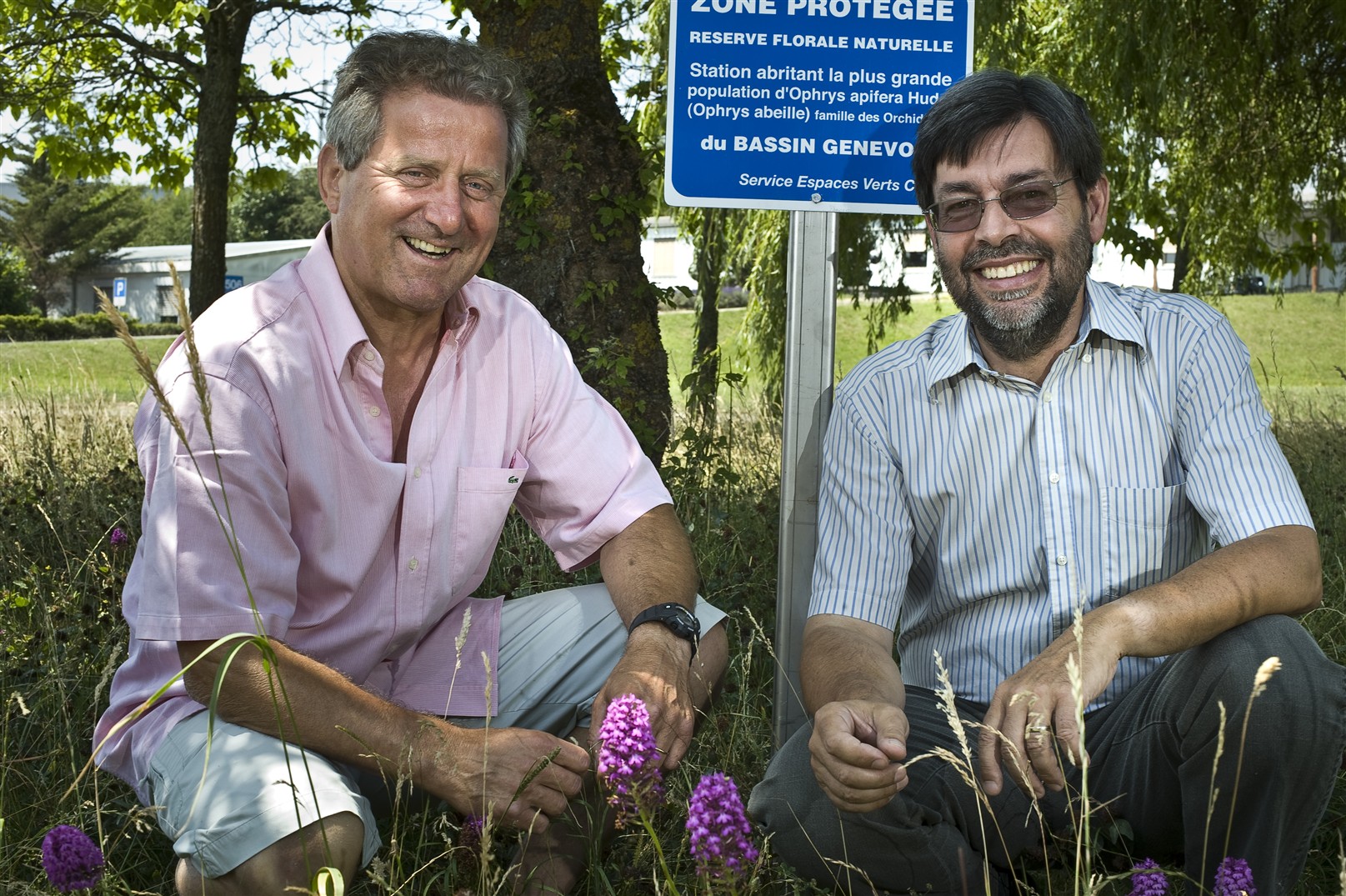CERN reveals its real nature
CERN has been awarded an environmental label for its protection of rare flower species and its natural landscaping at the Meyrin site.





It takes a trained eye to spot them. Compared to cultivated orchids, wild orchids are rather unassuming, with a maximum height of only 40 centimetres. However, their flowers are every bit as delicate and intricate. Thousands of them bloom every spring at CERN’s Meyrin site. This unusual plant species, and CERN’s decision to protect it, are the reason why the Swiss foundation "Nature & Economie" awarded the Laboratory its environmental label. The label is used to recognise organisations which protect nature and contribute to biological diversity. To be eligible for the award, at least 30% of the green areas around buildings have to be managed naturally.
CERN’s aging buildings are not always particularly beautiful to behold, so it comes as a surprise to learn that the Meyrin site is considered to be a nature reserve. The fact is that the green areas that surround the buildings make up 38% of the site’s 80 hectares. The team responsible within the General Infrastructure Services Department (GS/SEM/SM) has managed the green areas naturally for many years, avoiding the use of pesticides. Incidentally, there are several sheep meadows on the CERN premises, the grazing flocks providing a natural alternative to mowing. A flock of fifty sheep has been on the Meyrin site since mid-June.
In addition, twenty-odd patches of land are left unmowed in spring, allowing the local flora—including the orchids—to grow naturally. These are the patches of land sign-posted "Réserve florale naturelle - fauchage tardif", to indicate late mowing. Since 1993 the number of such areas has grown, with the help of a nature enthusiast (see box). CERN’s orchids are now being protected—and counted. Each year, between 1000 and 4600 plants are identified as belonging to one of 19 different species. Among other finds: CERN has the largest known population of the rare Ophrys apifera—the bee orchid—in the canton of Geneva, in addition to harbouring three even more rare sub-species. Between 800 and 3000 specimens of this particular species of orchid are identified on the site each year.
The orchid season is about to end, unfortunately, so you will have difficulty finding them now. But don’t miss them next year! Slow down and look carefully.
See also:
http://www.cern.ch/environmental-impact
The orchid man
Painting the picture of a reserved and modest man like Michel Vauthey is not an easy task, but when it comes to botany and nature, his favourite hobbies since boyhood, he is much more expansive. It was largely thanks to this landscape gardener from Geneva that CERN first began to protect its flora. In 1993, Mr Vauthey visited the Meyrin site to observe the wild orchids near Restaurant No. 2, whose existence had already been reported to Geneva’s Conservatoire et Jardin Botaniques. With the support of the Geneva Association for the Protection of Nature, of which he is a member, he encouraged those in charge of CERN’s green areas to put their lawnmowers aside so that the orchids and other flowers could be allowed to thrive. Ever since, he has been working with CERN, in particular with Yves Chevret, who looks after CERN’s green areas as a member of the GS Department. "He showed me a whole range of flora that I had been totally unaware of", says Yves. Signs indicating the presence of a natural reserve and the requirement for late-season mowing are in abundance on the Meyrin site - as are the orchids! "We have established very fruitful collaboration with CERN", confirms Michel Vauthey. Virtually every year he visits the CERN site several times to establish which areas are not to be mown, draw up a list of the different varieties and count all the plants! This painstaking task - or rather "pleasure", as he is quick to point out - has involved counting 34,000 flowers over the last 13 years. "It takes me a day and a half to count between 1000 and 2000 plants and identify the different species and sub-species", he explains. Michel Vauthey’s observations of local flora are not confined to CERN. During his spare time, he roams several hundred different sites in the Canton of Geneva, from the green areas of local companies to road embankments, public and private property, observing and counting rare species of flowers. "I spend a couple of hours a day doing this on average, not counting Saturdays and sometimes Sundays", he says. His botanical travels through the canton bring him into contact with many of the people in charge of green areas, whom he tries to convert to the natural maintenance principles he applies in his own work. Michel Vauthey, in fact, works for Geneva’s Construction and Information Technologies Department as head of green areas on the motorway network. Even motorway embankments, which many a nature lover would scorn, are worthy of interest for him.

